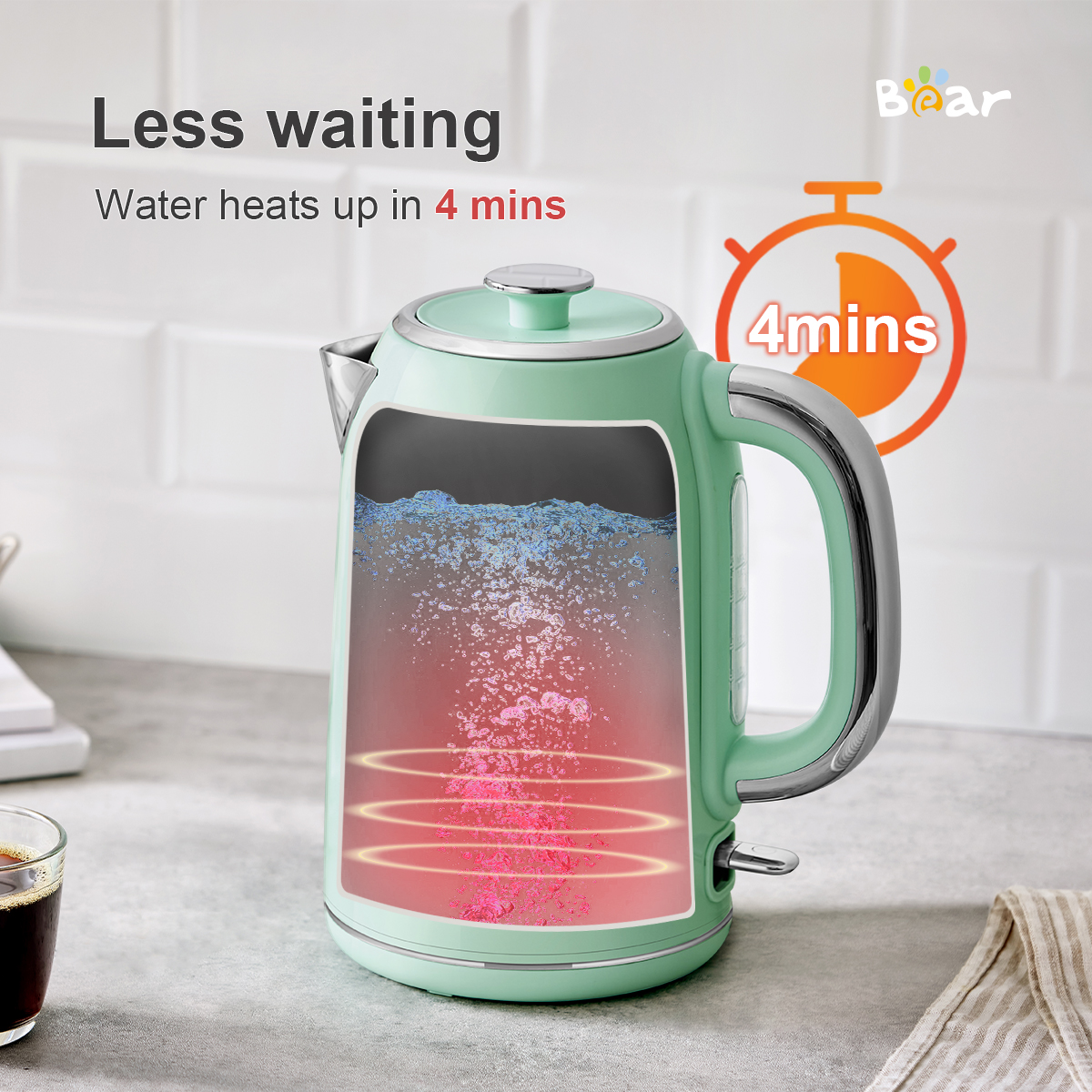Author: Site Editor Publish Time: 2025-03-27 Origin: Site
Do you notice white residue, a funny smell, or sluggish boiling times in your electric kettle? Don’t worry; you’re not alone. These are common signs of mineral buildup, particularly from hard water, which can affect your kettle's performance. Luckily, there's an easy and affordable way to clean your electric kettle and keep it running smoothly—vinegar!
In this post, we’ll walk you through the step-by-step process of how to clean your electric kettle using vinegar, one of the most effective and natural cleaning solutions available. You'll also learn why this method works and how you can maintain your kettle to extend its lifespan.
Vinegar is a powerful, natural cleaning agent known for its ability to dissolve mineral deposits and remove bacteria. It’s especially effective in combating limescale, which is the white, chalky buildup inside your kettle caused by calcium and magnesium found in hard water.
Using vinegar to clean your electric kettle is simple, cost-effective, and eco-friendly. Instead of using harsh chemicals that can damage your appliance, vinegar provides a gentle yet powerful cleaning solution that’s safe for both your kettle and the environment.

Before you begin, gather the following items:
● Distilled white vinegar
● Water
● Soft sponge or cloth
● Dish soap (optional)
Start by unplugging your electric kettle and making sure it's cool to the touch. Empty any remaining water from the kettle to prepare it for cleaning.
Fill your kettle halfway with a 1:1 mixture of distilled white vinegar and water. You don’t need a lot of vinegar to make an impact; just half the kettle’s capacity will suffice.
Switch on the kettle and bring the vinegar-water mixture to a full boil. The heat will help loosen any scale buildup and allow the vinegar to work its magic.
Once the kettle has boiled, turn it off and let the vinegar solution sit for at least 15 to 20 minutes. This resting period gives the vinegar time to dissolve mineral deposits and kill any bacteria that may be present.
After the solution has cooled, use a soft sponge or bottle brush to gently scrub the interior of the kettle. Pay special attention to the bottom and any areas where you notice visible limescale or grime. If there’s stubborn buildup, you can repeat the process or let the vinegar solution sit a little longer.
After scrubbing, discard the vinegar solution and rinse the kettle with clean water. It’s essential to rinse thoroughly to remove any vinegar residue. If necessary, repeat this step to ensure the kettle is completely clean.
While the interior is drying, wipe down the exterior of the kettle with a damp cloth to remove any smudges, dust, or water spots. This will keep your kettle looking shiny and new.
If your kettle has a removable filter, make sure to clean it separately according to the manufacturer’s instructions. Once everything is clean, dry the kettle with a soft cloth and reassemble it if necessary.

● Descale Regularly: If you use your kettle daily, it’s a good idea to descale it with vinegar or another solution every few months to prevent limescale buildup. In areas with hard water, you may need to clean it more often.
● Use Filtered Water: To reduce mineral deposits, consider using filtered or distilled water in your kettle. This can help prevent the buildup of limescale and keep your kettle cleaner for longer.
● Avoid Overfilling: Overfilling your kettle can cause water to spill over during boiling, potentially damaging the appliance. Follow the recommended water levels indicated in the user manual.
● Regularly Clean the Exterior: Wipe the exterior of the kettle down after each use to prevent stains and smudges. This simple step keeps your kettle looking fresh and well-maintained.
Cleaning your electric kettle with vinegar is an effective, natural way to remove mineral buildup and keep your kettle in excellent condition. By regularly descaling with vinegar, you’ll extend the life of your kettle and enjoy fresh, clean water for all your boiling needs. If you're in the market for a high-quality electric kettle, check out Bear Electric Appliance CO., LTD. for top-rated models that are both efficient and easy to maintain. Happy boiling!
A: It’s recommended to clean your electric kettle with vinegar every few months. However, if you notice limescale buildup or a change in water quality, you may want to clean it more frequently.
A: Distilled white vinegar is the best choice for cleaning your electric kettle due to its high acidity and mild scent. Avoid using flavored or balsamic vinegar, as these may leave residues or odors.
A: Yes, vinegar is safe to use on most electric kettles. It’s a natural, non-toxic cleaner that won’t damage the kettle. Just be sure to rinse it thoroughly after cleaning to avoid lingering vinegar smells.
A: If vinegar alone doesn’t remove all the scale, try repeating the process or using a stronger descaling solution. You can also try lemon juice or citric acid as an alternative.
A: Yes, vinegar is a versatile cleaner. It can be used on many appliances, including coffee makers, dishwashers, and even showerheads, to remove limescale and grime.